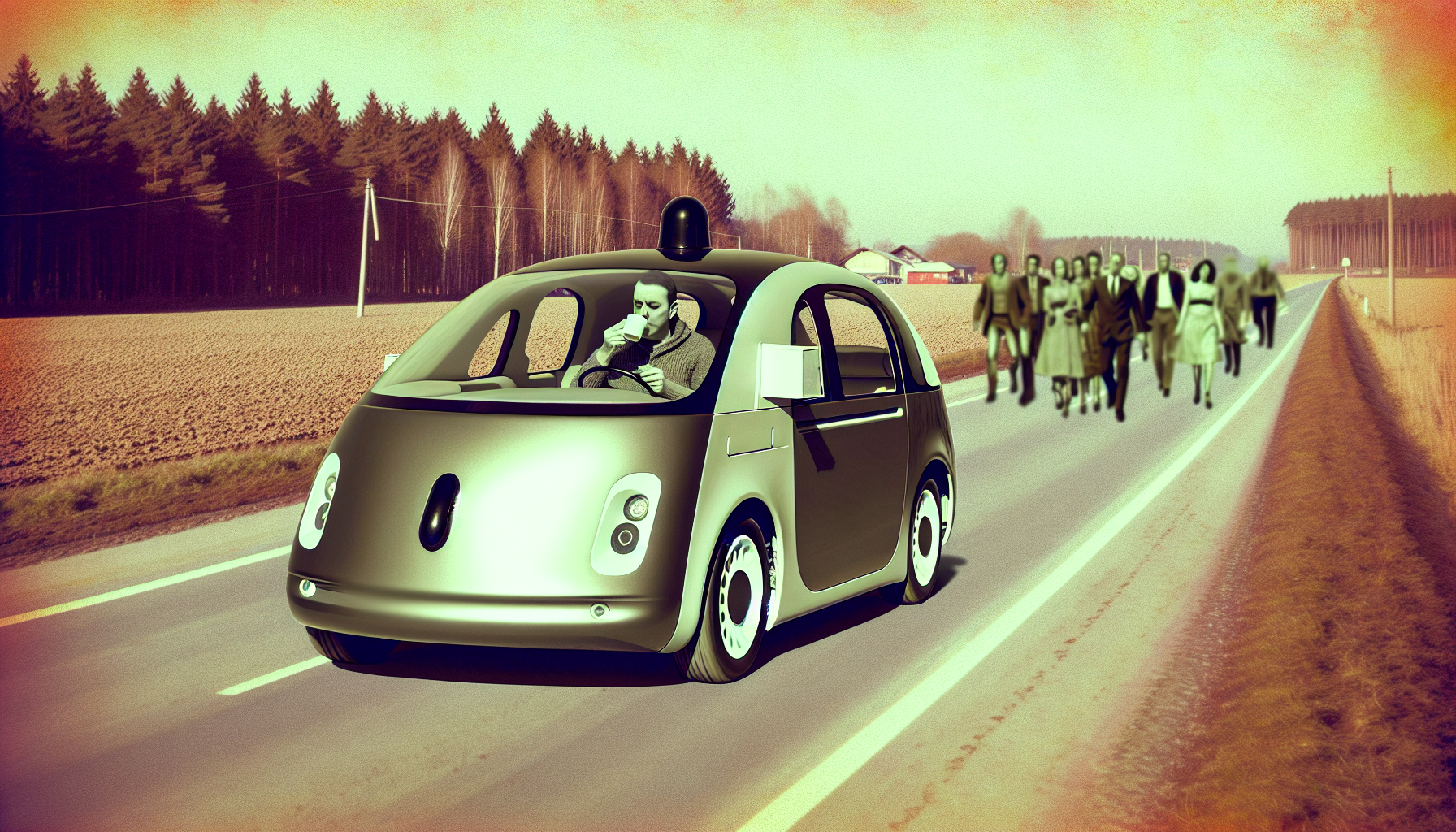Imagine you’re hurtling down the road in a shiny, new self-driving car. You’re sipping on your coffee, checking your email, and feeling rather futuristic. Suddenly, a group of people steps out into the road in front of you. Your car, equipped with its advanced AI, must make a quick decision: swerve into a different lane, where another pedestrian is standing, or continue forward and hit the group. Congratulations, you’ve just entered the modern-day version of the Trolley Problem.
Understanding the Trolley Problem
The Trolley Problem, a philosophical thought experiment introduced by Philippa Foot in 1967, poses a moral dilemma: should you pull a lever to redirect a runaway trolley onto a different track where it will kill one person instead of five? It’s a test of ethical decision-making, typically framed around utilitarian vs. deontological principles. Utilitarians argue that you should pull the lever to save the greater number of people, while deontologists might argue that deliberately causing harm, even for a greater good, is morally wrong.
The Self-Driving Twist
AI brings a new twist to this classic dilemma. In our shiny, new self-driving car scenario, it’s not a philosopher manually pulling a lever but rather an AI system making split-second decisions based on pre-programmed ethical frameworks. The underlying question becomes: how do we program morality into machines? Should the car prioritize the lives of its passengers over pedestrians? Should it statistically favor the “greater good” and make predominantly utilitarian calculations?
Moral Programming
Before we delve further, let’s have a brief chuckle at the idea that someone, somewhere, thinks they can boil down all of human morality into neat lines of code. If only Aristotle had access to Python.
Navigating this ethical quagmire starts with defining the guiding principles for AI’s decision-making processes. Here are some approaches:
1. **Utilitarian Approach**: A self-driving car might be programmed to minimize overall harm, effectively pulling the “virtual lever” to save the most lives possible. This might lead to unsettling decisions like sacrificing the passenger to save a greater number of pedestrians.
2. **Deontological Approach**: The car would follow a set of predefined rules. For example, it might never deliberately take an action that harms a human, regardless of the number of people who could be saved. This could result in the car not swerving at all, just plowing ahead into the unfortunate group.
3. **Relational Ethics**: Some argue for prioritizing people whom the decision-maker has a relationship with – in this case, the passengers. This resembles how a human driver might instinctively prioritize their own survival over that of strangers.
The Legal Labyrinth
Beyond philosophical musings, there’s the thorny issue of legality. Who’s held accountable when an AI makes a morally fraught decision? Is it the company that made the car, the engineers who coded the AI, or even the individual who ‘drove’ the car?
The legal system, like most of us, is still playing catch-up with technology. While laws differ globally, a lack of clear regulations creates a loophole-laden labyrinth. Until legislators can catch up, car manufacturers are largely guided by their risk tolerance and ethical stances, which, let’s face it, can sometimes boil down to what’s least likely to get them sued.
Public Perception and Trust
It’s not just legality; it’s about trust. For AI to become fully integrated into society, the public needs to feel secure. Even the most mathematically sound algorithm means little in the face of human intuition and fear. If people don’t trust the AI’s moral compass, they won’t use the technology. It’s a delicate balancing act, where transparency and education become key.
Imagine car ads in the future: “Our new model voted ‘Most Likely to Make Ethical Decisions’!”
A Collaborative Future
Given the complexities at play, the solution isn’t solely technological but deeply interdisciplinary. It involves ethicists, engineers, legislators, and the general public.
We need more than algorithms; we need conversations. Yes, I’ve just proposed “more meetings,” but of the philosophical variety. We need ongoing dialogue to understand and integrate complex human values into AI systems. After all, morality isn’t just a set of rules or lines of code – it’s a living, evolving conversation that reflects our best and worst selves.
The Road Ahead
So, the next time you sip coffee in your autonomous vehicle, know that you’re participating in one of the grandest ethical experiments of our time. The Trolley Problem has rolled into the 21st century, and its resolution is far from simple. It’s a shared journey, rife with potholes and detours, but ultimately aimed at better understanding not just our machines, but ourselves.
And who knows? Maybe one day, we’ll create an AI with the wisdom of Solomon and the humor of Groucho Marx – just imagine all the puns it could tell as it navigates us safely home.

Leave a Reply